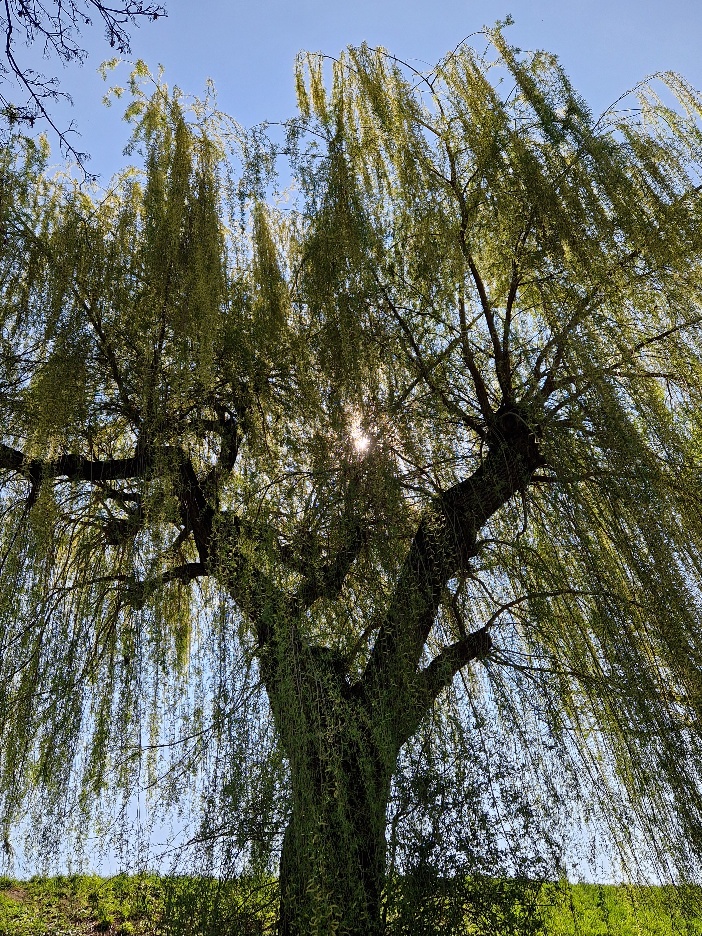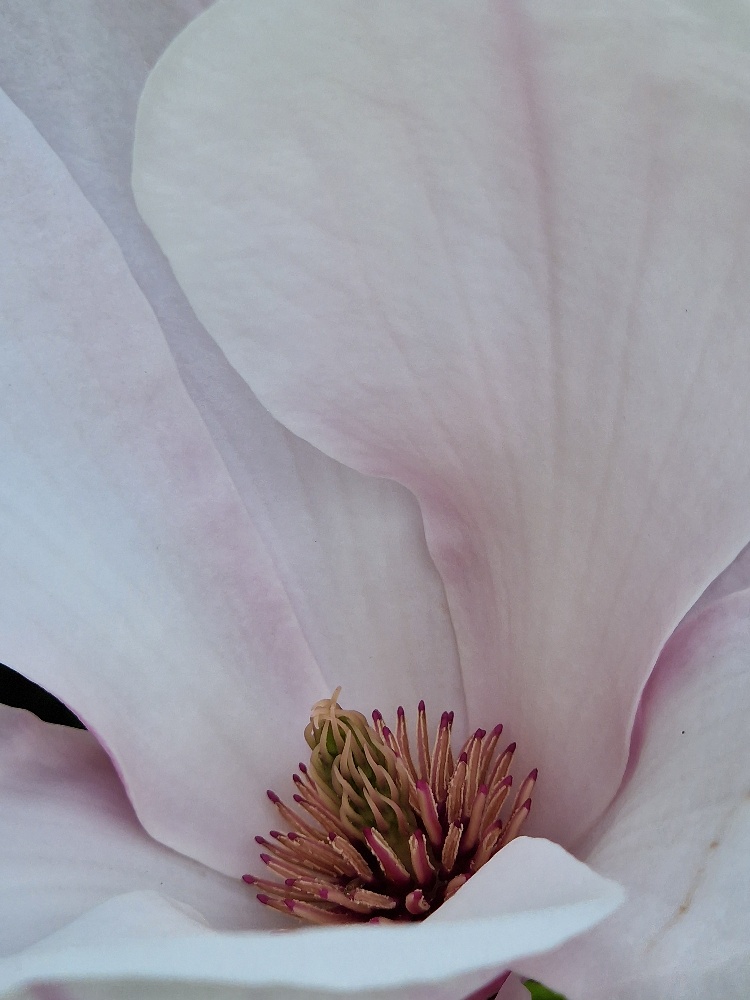Our deepest fear is not that we are inadequate. Our deepest fear is that we are powerful beyond measure. It is our light, not our darkness that most frightens us. We ask ourselves, ‚Who am I to be brilliant, gorgeous, talented, fabulous?‘ Actually, who are you not to be? You are a child of God. Your playing small does not serve the world. There is nothing enlightened about shrinking so that other people won’t feel insecure around you. We are all meant to shine, as children do. We were born to make manifest the glory of God that is within us. It’s not just in some of us; it’s in everyone. And as we let our own light shine, we unconsciously give other people permission to do the same. As we are liberated from our own fear, our presence automatically liberates others.
Marriane Williamson, A Return To Love
We shall not cease from exploration
And the end of all our exploring
Will be to arrive where we started
And know the place for the first time.
T. S. Elliot, Four Quartets
One of my favourite tales, the story of the Golden Buddha, came up again in conversation this week.
Fashioned by devout monks almost 800 years ago from 5,500 kg of pure gold, the statue of the cross-legged, sitting Buddha has had a colourful history, having been moved around and venerated at several different locations over the centuries. It is now housed in the Wat Traimit temple in Bangkok.
The exact origins of the statue are unclear. It seems to have been made in the Sukhothai Kingdom and one or two centuries later moved from Sukhothai to Ayutthaya, at the beginning of the 1400’s.
In the 1760’s, the Burmese army invaded Ayutthaya. As the invading forces had a fierce reputation for brutality, destruction, and plunder, the monks there feared for the safety of their treasured statue, so they covered it over with a thick layer of plaster and coloured glass to conceal its true value. In doing so, they hoped to trick their enemies into believing that the statue was of little material value and therefore not worth stealing.
This trick seems to have worked. The invaders, having plundered all the temples in the region, moved on, leaving the bulky and apparently worthless statue behind. Its precious core still concealed, it remained among the ruins of Ayutthaya without attracting much attention. Over time, its true nature was forgotten.
On the establishment of Bangkok as the Capital of the Kingdom of Siam in 1801, the statue, along with many others located throughout the country, was brought to the new centre of power. It finally ended up at Wat Traimit which was then a pagoda of minor significance. This temple was so small that the statue was simply parked outside under a tin roof for many years.
In 1954, a new assembly hall was built at the temple and the decision was made to house the Buddha within. It was to be moved to its new location on 25 May 1955. There are several conflicting accounts as to what exactly happened that day, but it is clear that during the final attempt to lift the statue from its pedestal, the ropes broke, and the statue fell hard on the ground. At that moment, some of the plaster coating chipped off, revealing a glimmer of the gold surface underneath. Work was immediately stopped so that a thorough evaluation could be carried out.
To their astonishment, the monks discovered the gold under the outer protective layer of stucco and glass. With great joy, the outer layers of cheap material were removed, thus revealing the Buddha in its original glory. Finally, it was given pride of place in its new home, where it stands to this day.
This story has become a beautiful and inspiring analogy for the process of healing and self-actualisation. What is meant by this?
As children, we have fundamental human needs. The adequate fulfilment of these needs allows us to grow and thrive. They revolve around three main themes:
The first is the need for security and survival. Of all the mammals on Earth, we are, at birth, the most helpless. We cannot walk or talk and are totally dependent on our mother (or other caregivers) to soothe and feed us, keep us warm, and protect us from danger. High levels of stress or anxiety have detrimental effects on our development, growth, and well-being.
The second fundamental necessity is that of affection, esteem, and approval. Studies have shown that infants who do not receive human touch, eye contact, or verbal encouragement tend to languish and die. Deep down inside, we all recognise how important these are.
The third area is that of power and control. Children who are chronically micro-managed, abandoned, or abused end up deeply wounded and debilitated in terms of becoming healthy adults. We all need a sense of agency if we are to survive and thrive.
Adequate gratification of these needs by no means requires perfection on the part of the caregivers or faultless familial circumstances. It is sufficient to have `good enough´ parenting. Unfortunately, for a variety of very human reasons, this is not always available.
The first four years are critical for the development of the child in this respect. The gratification of these three sets of needs plays a key role in facilitating the emergence of a healthy sense of self on the part of the child.
Anybody who has raised a child or children knows that the early years can be extremely stressful for all involved, children and adults. The child whose needs are not adequately met `falls from Grace´. In cases where a healthy degree of happiness eludes him, the `pursuit of happiness´ sets in. He begins to develop strategies which he hopes will increase the probability of his needs being met.
The State of Grace could be described as Nature’s Plan A. This states that, as we are, we are perfect, even in our human imperfection. Here we feel loved and accepted, without judgement or punishment. Happiness is the result of being our True Self, embracing what happens, and trusting the process of life.
This is the most straightforward recipe for healthy childhood development. As we grow older, we may then be lovingly guided by our caregivers to form new perceptions and resources, and to further cultivate our ideas and behaviours in an age-appropriate manner.
For example, we are not the centre of the universe (as we initially perceived at birth) and need to grow out of that perception over time. Plan A differentiates between our being and our behaviour, always loving the former while guiding the latter towards higher forms of noble adaptation.
Should our caregivers prove incapable of conveying the truth of our perfection, – ideally by modelling it in their own behaviour, – we may experience our evolving human development as painful and frustrating. In extreme cases, life can seem unbearable.
When Plan A fails, we begin to interpret the gratification of our instinctual needs as happiness. When these needs are frustrated, that is, if our needs for security, power, and affection are stifled, we become wounded. The resulting wounds may cast long shadows into the future.
This is where our golden kernel, our pristine essence, begins to get obscured by layers of compensatory `stuff´.
Because we are still wholly dependent on them, we cannot bear the idea that our caregivers may not be up to the job of parenting, so we look for the roots of our difficulties in ourselves. Something must be wrong with us. Coping mechanisms and survival strategies begin to emerge. These comprise thoughts, belief systems, feelings, and behaviours which we hope will increase the probability of our needs being met, and thus the attainment of happiness.
For example, one of the gifts I received early in life is high sensitivity, the ability to pick up on the energy field of those around me. I could scan a room and estimate, with a high degree of accuracy, what the other or others would like to hear or see from me. This is the birth of the Pleaser, a pattern most of us know and recognise.
Such coping mechanisms are, in themselves, simply resources which can, with discernment, be put to good use. When they are used in the vain pursuit of the happiness that had initially eluded us, they become runaway trains which not only fail to achieve the intended goal, but may, through repeated application, cause unintended harm to ourselves and others.
As we learn later in life, happiness cannot ever be attained. Happiness is a by-product of being who we truly are and embracing what happens. The more we strive for it, the further it slips from our grasp. This increases our frustration, and we simply try harder by applying more effort. Now we find ourselves in a self-perpetuating vicious cycle. The fact that a further eight billion people are all playing the same game, exacerbates things.
Plan B becomes amplified as the mantra of society and the engine of the global economy. In the age of social media, there is no let up in the messaging that we will be happy when this or that external goal is attained. It’s the bread and butter of the consumer society we have created. Instead of the promised happiness, much misery is produced.
Each round of fruitless effort is yet another layer of plaster wound around our core being, our essence. After a while we lose sight of who we really are. The good news is that this existential malady usually contains the seeds of its own unravelling.
The repressed emotional material from our childhood trauma is warehoused in the body in the form of afflictive emotions such as anger, desolation, discouragement, grief, guilt, humiliation, loneliness, rage, shame, and a sense of rejection. As these dictate our thinking and actions, we begin to become miserable, especially when the inevitable setbacks of any human journey begin to accumulate. Then, if we are lucky, we get sick and tired of being sick and tired.
At that point we may experience the onset of the restoration of Grace, as happened in the story of the Golden Buddha on May 25th, 1955.
Some people argue that substance addicts are especially blessed because our hands are forced in a unique fashion. We reach a `live or die´ fork on the road relatively early in life. We are forced to choose. The option of sleepwalking through until the end of our incarnation is not really an option.
The first step on the road to recovery (of the True Self) is asking for help. This runs counter to the script of the wounded child who generally concludes that she must solve life’s challenges all by herself. This extreme form of self-reliance is a typical so-called `trauma response´.
When we ask for and avail of help, we usually find that our problems stem from the fact that we have been trying to run the show of life, fuelled by our will power, which is essentially a low-grade fuel. This is akin to trying to solve the problems with the same thinking we used when we created them. As Einstein pointed out, that doesn’t work.
An excellent template for identifying and utilising a higher grade fuel is provided by the Twelve Steps of AA, originally published in 1939, and now being successfully applied, for a wide range of substance and process addictions, throughout the world.
The solution is the return to Plan A. The prerequisite of recovery is total abstinence from the addictive substance or process, one day at a time. Gradually, with the help of those ahead of us on the same path, we then learn to recognise and accept reality, and, without judgement or rancour, to live life on life’s terms.
As we progress in this collective healing process, we begin to recognise that that for which we had been searching `out there´ for so long, is to be found only within, beneath the layers of fear-fuelled habits and attitudes which, in our youthful drive for survival and subsequent helplessness, had concealed our golden kernel, our True Self.
Recovery, therefore, entails not the creation of anything new but rather a discovery, an uncovering, of something precious within, the jewel which got obscured as we floundered in those formative years directly after our fall from Grace. We will ultimately arrive back where we started, and know ourselves for the first time.










